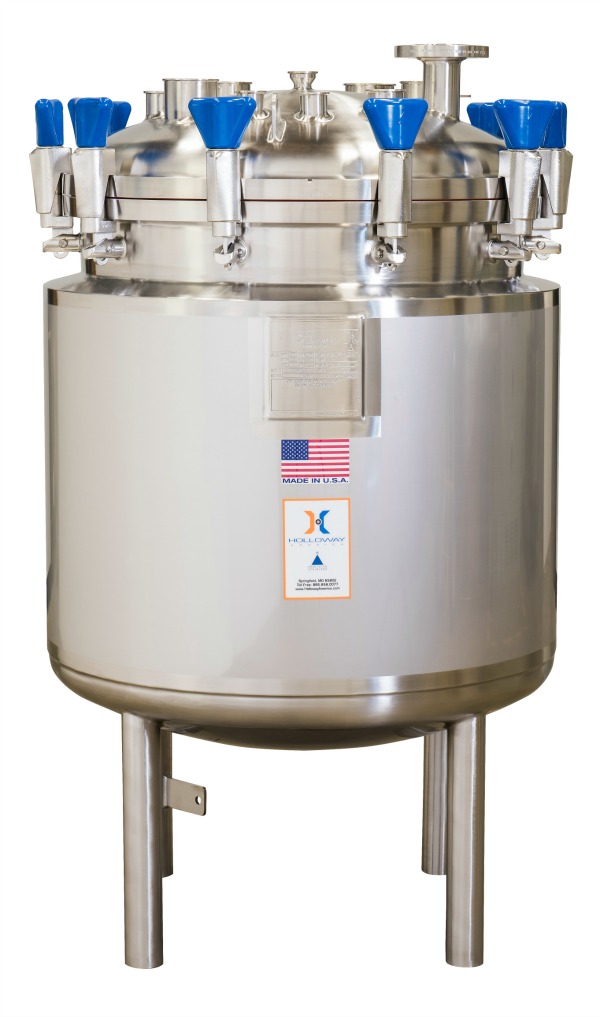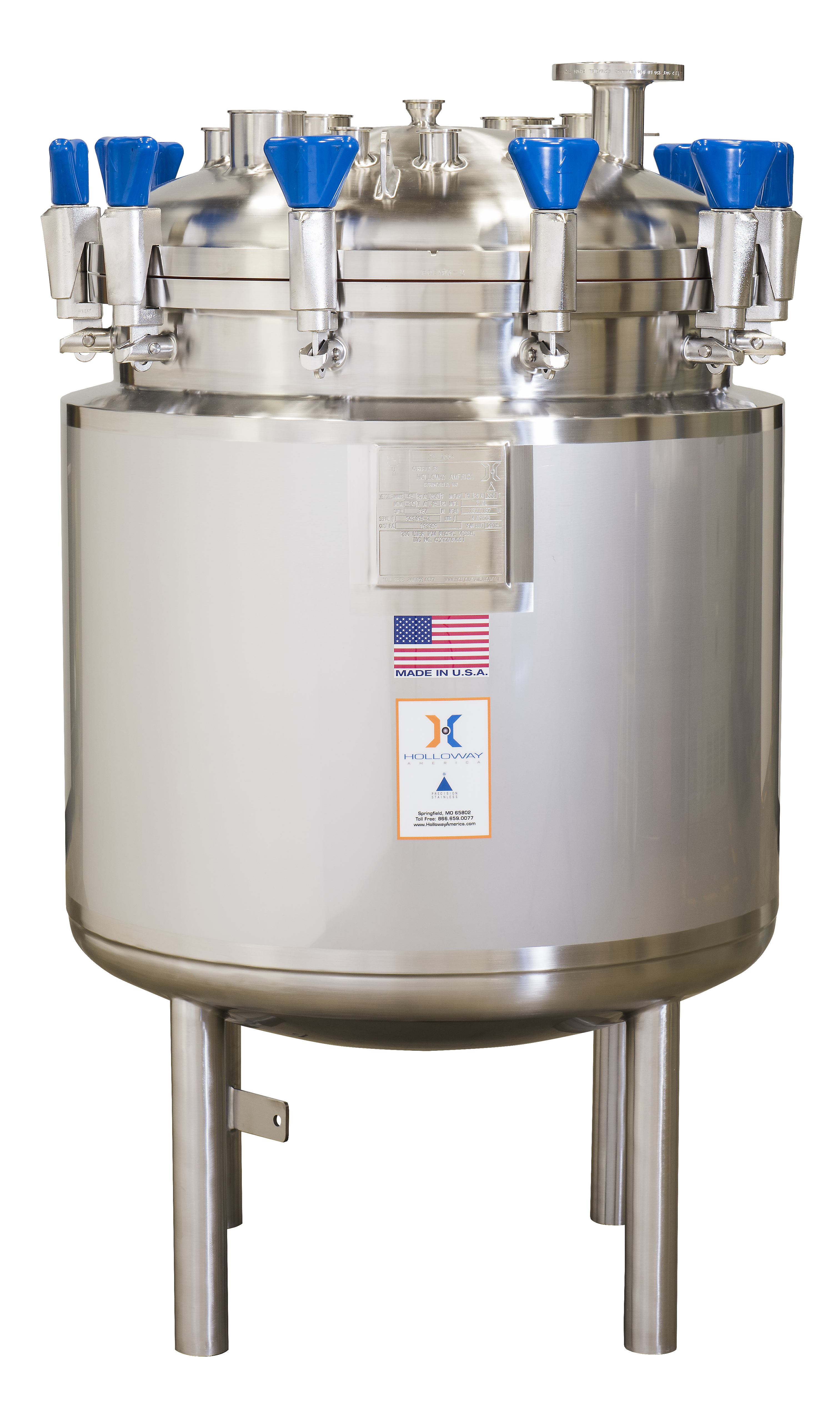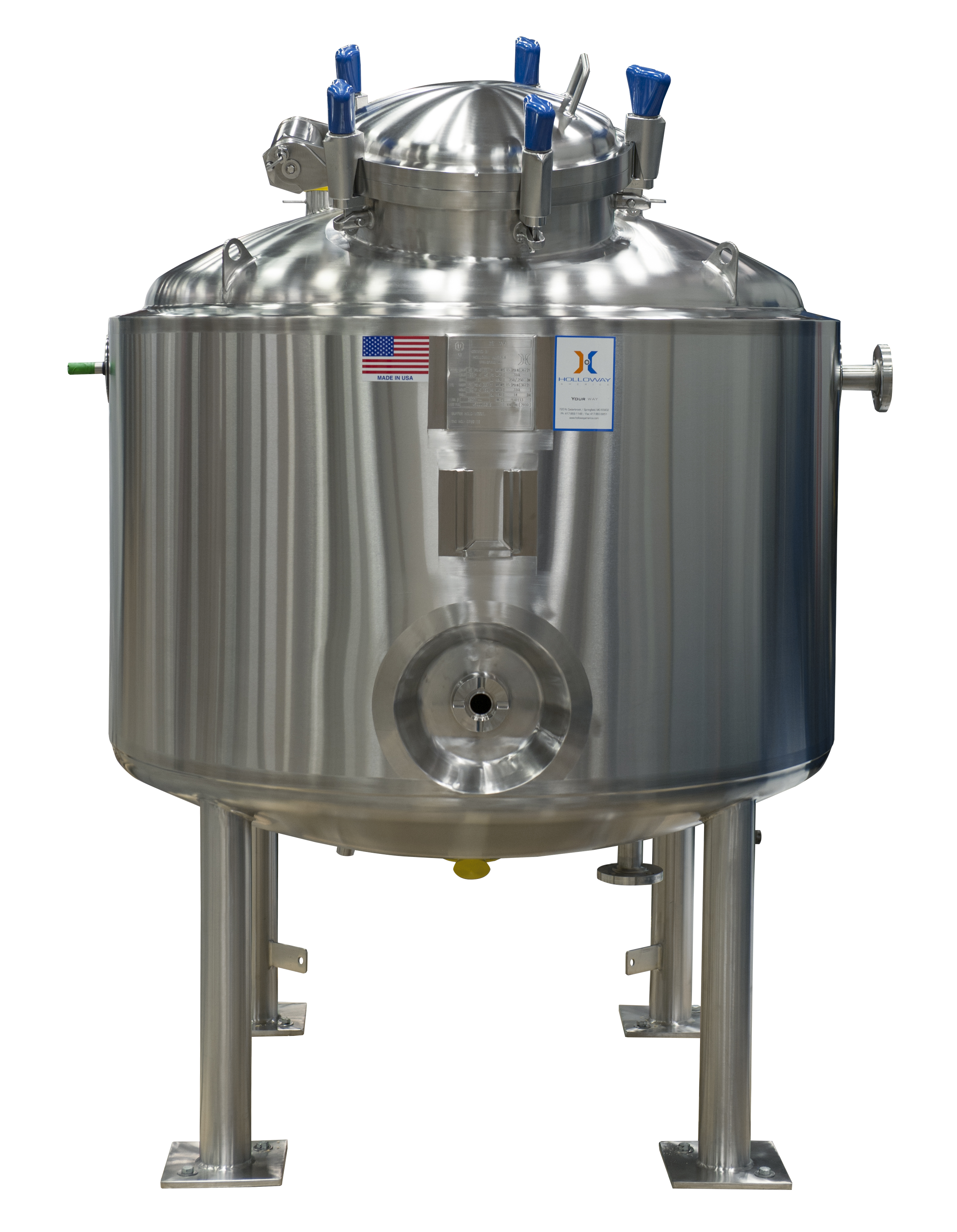Clean-in-Place (CIP) Vessels
See how our CIP pressure vessel design makes 100% sprayball coverage possible.

CIP Vessels for 100% Cleaning Coverage
When HOLLOWAY AMERICA opened in 1949, the CIP vessel did not yet exist. Back then, sanitizing stainless steel tanks required long production stoppages while each tank was disassembled and cleaned manually. Thankfully, the ’50s marked the invention of innovative clean-in-place design.
As HOLLOWAY AMERICA has grown over the years, our engineers have seen—as well as made—major strides in CIP technology for our vessels. Today, achieving 100% certified sprayball coverage with our CIP vessels can be a fast, entirely automated process that helps protect your employees from potentially harmful chemicals. Our CIP vessels will also help safeguard your product from needless contamination.
Clean-in-Place Vessel Considerations
To ensure every internal area is 100% covered during CIP Coverage Testing, we take precautions with our CIP vessel designs:
- We locate sprayballs to avoid any shadows from internal nozzle sidewalls.
- We pay particular attention to baffles, large nozzles, manways, agitator shafts and blades, and sidewall nozzles with extended dead legs.
- If you are limited to a specific number of CIP nozzles or available "Drops" then we can supply satellite sprayballs to cover multiple nozzles and areas with just one connection or CIP "Drop".

Clean-in-Place Vessel Materials
To ensure your clean in place vessel is long-lasting and reliable, right down to each sprayball, we use the following construction materials for all our CIP vessels:
- T–316L (standard)
- T–304L
- T–317L
- C–22
- C-276
- AL-6XN™
- Other materials available by request


